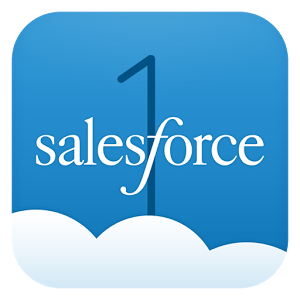 For the past few years, the salesforce.com mantra has been Chatter. Everything was Chatter and everything connected to Chatter. Chatter was the way, the truth and the life. If youve been watching salesforce.com recently you may have noticed a lot of talk about mobile; especially with the release of the mobile packs for development. Last week at Dreamforce, salesforce.com announced Salesforce1 with much hype and fanfare. It was billed as One Customer Platform to Connect but what does this mean for the average Force.com developer? How will this impact our daily lives?
For the past few years, the salesforce.com mantra has been Chatter. Everything was Chatter and everything connected to Chatter. Chatter was the way, the truth and the life. If youve been watching salesforce.com recently you may have noticed a lot of talk about mobile; especially with the release of the mobile packs for development. Last week at Dreamforce, salesforce.com announced Salesforce1 with much hype and fanfare. It was billed as One Customer Platform to Connect but what does this mean for the average Force.com developer? How will this impact our daily lives?
From a high level Salesforce1 is a unifying, mobile-ready, API-enabled wrapper (10x more APIs for your development pleasure!!) around everything Salesforce.com offers. They have stated that every new feature must be designed for mobile first (responsive design, features based upon device) and have an API for developers. Theres a big push to open up the existing platform by releasing new and improved APIs. Hurrah!
The marketing message for Salesforce1 is still a little fuzzy to me. Salesforce1 is both a mobile application and platform on which to build mobile applications. Looking at the docs and running through some tutorials, it seems to provide the best of both worlds. Administrators can build declaratively (who needs developers?) while coders can can leverage their favorite development language to create rich, interactive applications for Salesforce1.
Declaratively creating apps is almost too simple. Even I can do it. Create mobile page layouts for interacting with your records or create a publisher action to implement custom functionality (e.g., send Christmas card) using custom actions with Visualforce or Canvas apps and easily expose it in Salesforce1.
If code is more your thing then theres plenty to love no matter what your language of choice is. If you know Visualforce and Apex, you can easily extend the Salesforce1 app and give your mobile users the functionality they need. Theres also a pilot for Force.com Canvas so you can use virtually any language to integrate Salesforce1 with third-party web applications. If you love RESTful endpoints, and who doesnt, custom actions are automatically REST-enabled! #FTW!
Salesforce1 also includes flexible pages which is a type of custom layout. These pages sit somewhere between page layouts and Visualforce pages and allow you to create a home page for third-party apps that you can add directly to Salesforce1 mobile navigation.
If native app dev tricks your trigger, the Salesforce Mobile SDK provides for iOS and Android development. You can also use it to implement a native container for HTML5 and hybrid apps.
Theres a lot of work to do to connect all of the people, things and devices in the world so head on over to the new developer.force.com and get started today!




